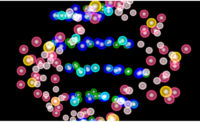Is it getting hot in here?

Indeed, as part of this change, FSIS will dedicate far more resources to identify the original upstream supplier of contaminated trim. Thus, moving forward, in the event of a positive regulatory sample or a foodborne illness outbreak, these new agency investigations will be focused on the supplier (or suppliers) of any raw beef trim that was used by a processor to make the ground beef at issue.
As part of these efforts, the agency will deploy Enforcement Investigations and Analysis Officers (EIAOs) to visit each of the suppliers at issue to review their operations and microbiological testing records. The purpose of these visits will be to identify those cases where the contamination was caused by a larger, yet undiscovered underlying problem. In turn, if FSIS uncovers any evidence of sanitary issues or widespread contamination, the agency may conclude that a beef trim recall or other regulatory or enforcement actions are warranted at the harvest level.
In the same spirit, FSIS on numerous occasions has reported on the correlation between foodborne illness outbreaks and hot days, or high event periods (HEPs) in harvest facilities. A high event period is a period in which the number of lots that test positive for a pathogen (i.e., beef trim intended for grinding) exceed a certain threshold. An increase in the number of positive findings can be indicative of wide-spread contamination and may lower the confidence in negative testing results.
In turn, during the course of the agency’s new traceback investigations, EIAOs will begin looking for very specific information. According to the agency, the EIAOs will be instructed to determine: (1) whether the harvest facility experienced an HEP during the production periods or days in question; and (2) if so, whether the facility responded appropriately by diverting all potentially affected trim. Investigators also will be instructed to verify whether the establishment’s controls were working and whether the establishment took appropriate corrective actions.
If the EIAOs uncover any evidence that contaminated beef trim (other than the trim used to process the positive or suspect batch) was released into commerce, the agency may take further regulatory action or urge a voluntary recall. For this reason, harvest facilities faced with high levels of positives now have increased incentive to segregate not only those lots that test positive, but also any other lots that may have been affected.
In the end, the change in FSIS policy should have a net positive effect on food safety. Although I doubt an increase in the amount of beef trim recalls will likely result, the policy at least ensures that harvest facilities will now begin focusing more attention on HEPs as well as the underlying safety of the raw trim products that processors ultimately receive.
Looking for a reprint of this article?
From high-res PDFs to custom plaques, order your copy today!






